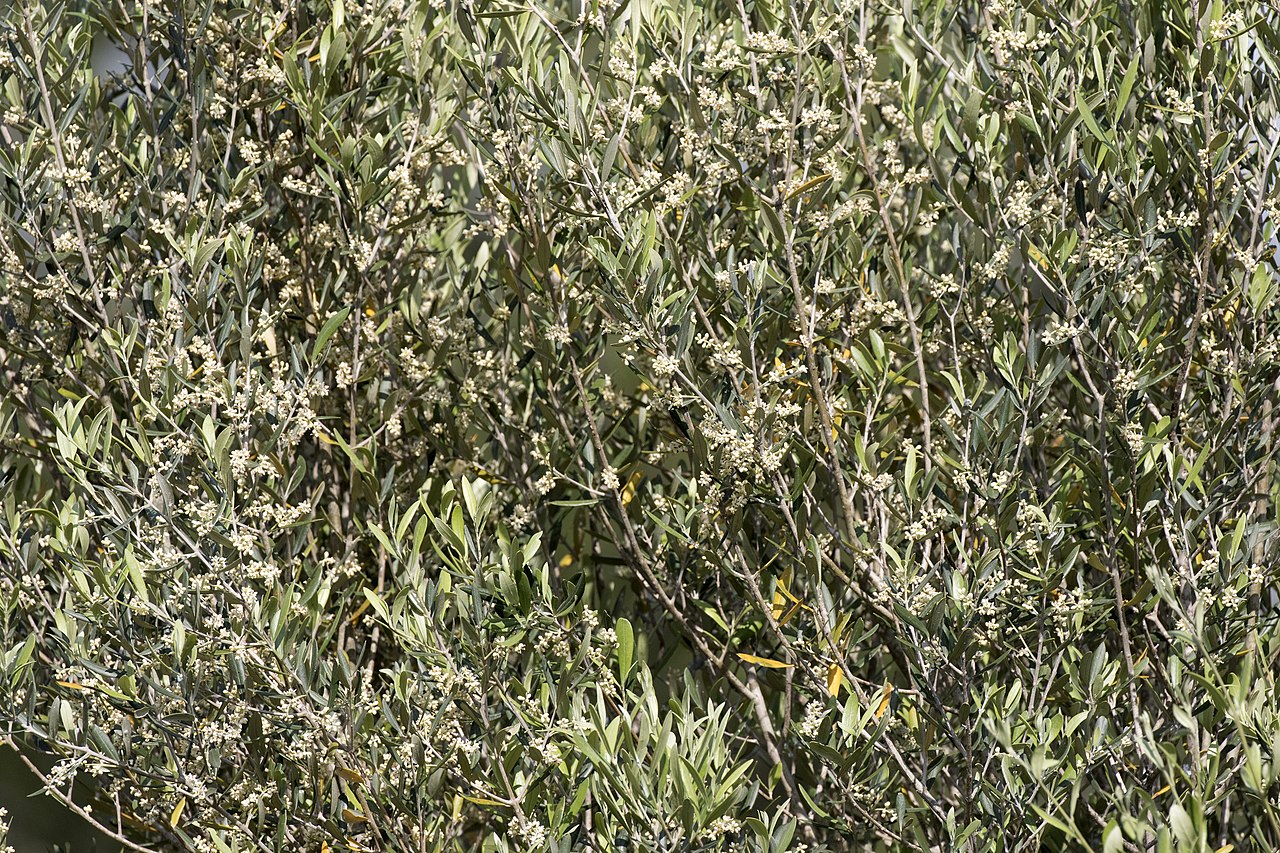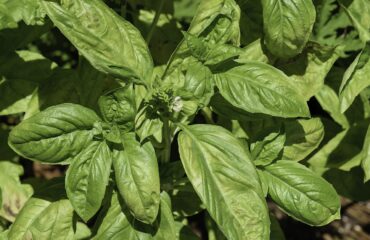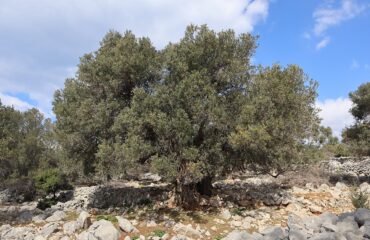Olea oleaster, commonly known as the Wild Olive, is a hardy, evergreen shrub or small tree native to the Mediterranean region. It is closely related to the cultivated Olive (Olea europaea) and is often found in the wild or used as rootstock for grafting cultivated varieties. Valued for its drought tolerance, attractive silvery foliage, and small, edible fruits, Olea oleaster is a versatile plant suitable for ornamental gardens, hedges, and as a source of olive oil in some regions. Propagating Olea oleaster can be accomplished through various methods, including seeds, cuttings, grafting, and less commonly, air layering. Each method has its specific applications, providing different advantages for gardeners and horticulturists.
Olea oleaster (Wild Olive Tree) Propagation Methods
This structured overview covers the propagation methods for Olea oleaster, offering practical insights and guidance for both novice and experienced gardeners interested in growing this versatile and hardy plant.
1. Seed Propagation
Seed propagation is a traditional method for growing Olea oleaster, although it requires patience due to the variable germination time.
1.1. Seed Collection
- Identifying Mature Seeds: Seeds are collected from ripe fruits, typically harvested in late autumn when the fruits have turned black or dark purple.
- Seed Extraction: Extract the seeds by crushing the fruits and removing the pulp. Wash the seeds thoroughly to remove all flesh.
- Seed Cleaning: Cleaned seeds should be dried for a few days in a cool, shaded area to prevent mold during storage.
1.2. Sowing and Germination
- Stratification: Olea oleaster seeds often benefit from cold stratification. Place the seeds in moist sand or vermiculite in a plastic bag and store them in the refrigerator for 2-3 months to break dormancy.
- Sowing Seeds: After stratification, sow the seeds in pots or seed trays filled with a well-draining seed-starting mix. Place the seeds about 1 cm deep.
- Germination Conditions: Maintain a warm environment (15-20°C or 59-68°F) and keep the soil consistently moist but not waterlogged.
- Germination Time: Germination can be slow and unpredictable, often taking several months to over a year. Patience is essential.
- Seedling Care: Once seedlings emerge, provide them with bright, indirect light and continue to keep the soil moist. Transplant seedlings into individual pots when they have a few sets of true leaves.
2. Stem Cuttings
Propagation through stem cuttings is a more reliable and faster method than seed propagation, producing clones of the parent plant.
2.1. Cutting and Preparation
- Selecting Cuttings: Choose healthy, semi-hardwood cuttings from the current or previous season’s growth, typically taken in late summer or early autumn. Each cutting should be 10-15 cm long with several nodes.
- Cutting Technique: Use a sharp, sterilized knife or pruning shears to make a clean cut just below a node. Remove the lower leaves, leaving the top few leaves intact.
- Rooting Hormone: Dip the cut end of the cutting into rooting hormone powder to enhance root development.
2.2. Rooting and Planting
- Rooting Medium: Plant the cuttings in a well-draining mix, such as a blend of peat and perlite or a commercial cutting mix.
- Rooting Environment: Place the cuttings in a warm, humid environment with bright, indirect light. A plastic cover or humidity dome can help maintain humidity.
- Rooting Time: Roots typically develop within 6-8 weeks. Keep the soil evenly moist during this period.
- Transplanting: Once the cuttings have rooted, transplant them into larger pots or directly into the garden.
3. Grafting
Grafting is commonly used for propagating cultivated olive varieties onto Olea oleaster rootstock to combine the hardy root system of the wild olive with the desired traits of the scion.
3.1. Grafting Techniques
- Selecting Rootstock and Scion: Use healthy Olea oleaster plants as rootstock and compatible cultivated olive varieties as scions.
- Grafting Methods: Common grafting techniques include cleft grafting, whip-and-tongue grafting, and T-budding. Make precise cuts on both the rootstock and scion to ensure good contact.
- Grafting Procedure: Join the scion and rootstock, secure with grafting tape or rubber bands, and apply grafting wax to protect the graft union.
3.2. Post-Grafting Care
- Environment: Place the grafted plants in a controlled environment with high humidity and indirect light to promote healing and growth.
- Monitoring: Regularly check the graft for signs of compatibility and new growth. Remove any shoots that develop from the rootstock below the graft.
4. Air Layering
Air layering is a less common but effective method for propagating larger Olea oleaster plants, particularly when dealing with woody stems.
4.1. Air Layering Process
- Selecting a Branch: Choose a healthy, vigorous branch that is at least one year old.
- Preparing the Branch: Make a small upward cut or remove a ring of bark around the branch (girdling) to expose the inner wood.
- Applying Rooting Medium: Apply rooting hormone to the exposed area and wrap it with moist sphagnum moss. Cover the moss with plastic to retain moisture and secure it with ties.
4.2. Root Formation and Separation
- Monitoring: Check the air layer periodically to ensure it stays moist and look for root development. This process can take several months.
- Separation and Planting: Once a substantial root system has developed, cut the branch below the rooted area and plant it in a pot or directly in the ground.
Conclusion
Propagating Olea oleaster through seeds, stem cuttings, grafting, and air layering provides diverse methods to suit different needs, from creating genetic diversity with seeds to cloning specific traits through cuttings and grafting. Each method has its own benefits and challenges, making it important to choose the right technique based on the desired outcome and available resources. By understanding and applying these propagation techniques, gardeners and horticulturists can enjoy the resilience and ornamental beauty of Olea oleaster, whether for use in landscaping, as rootstock, or for its small, edible fruits.
Share this article


